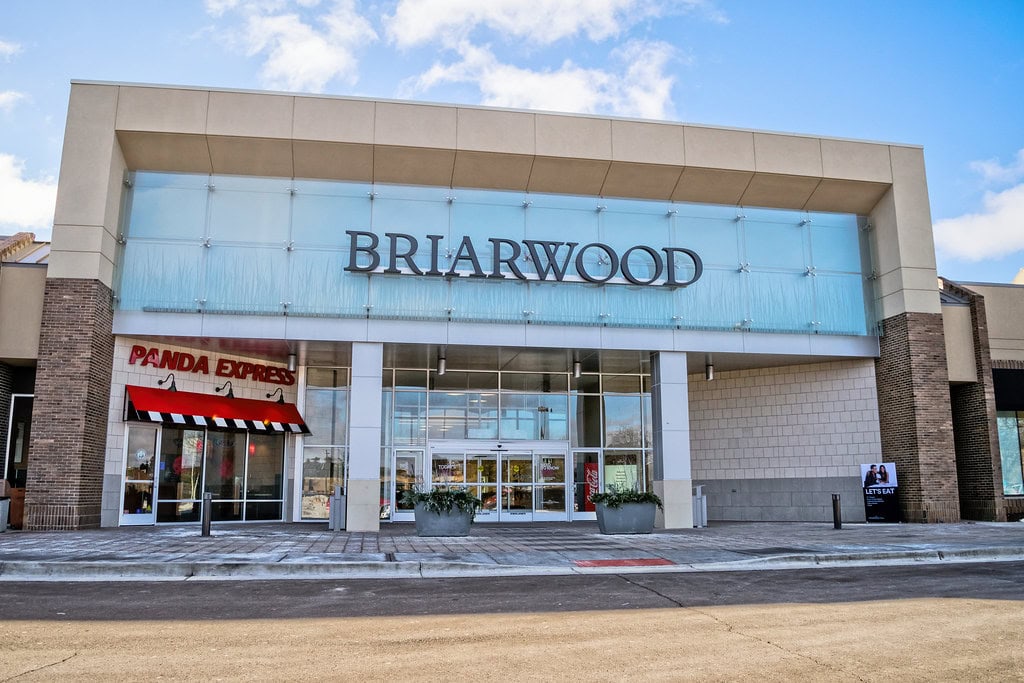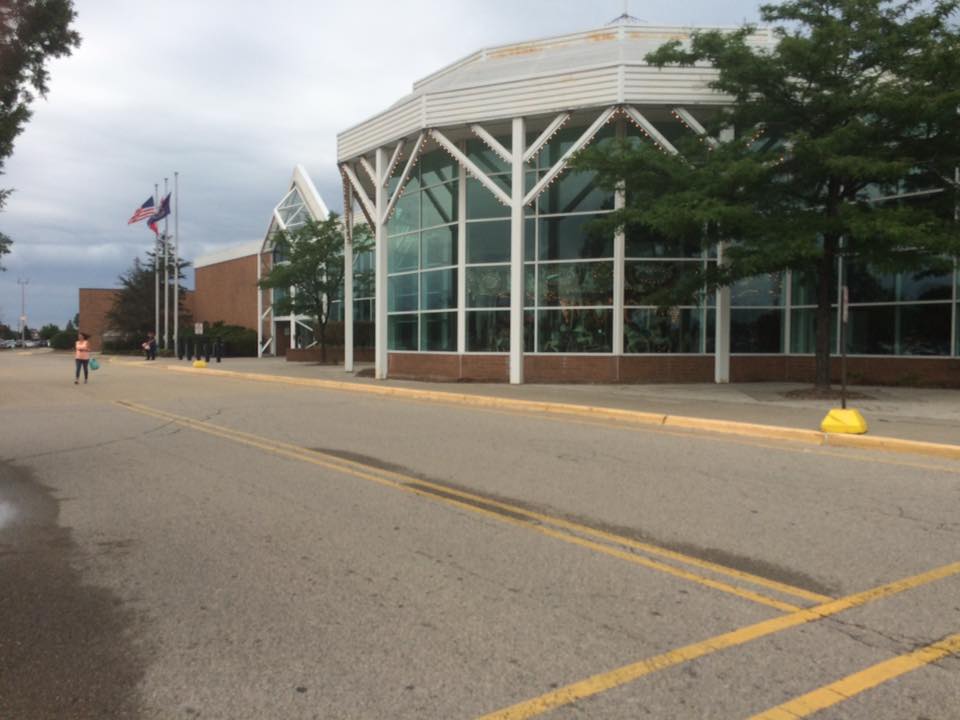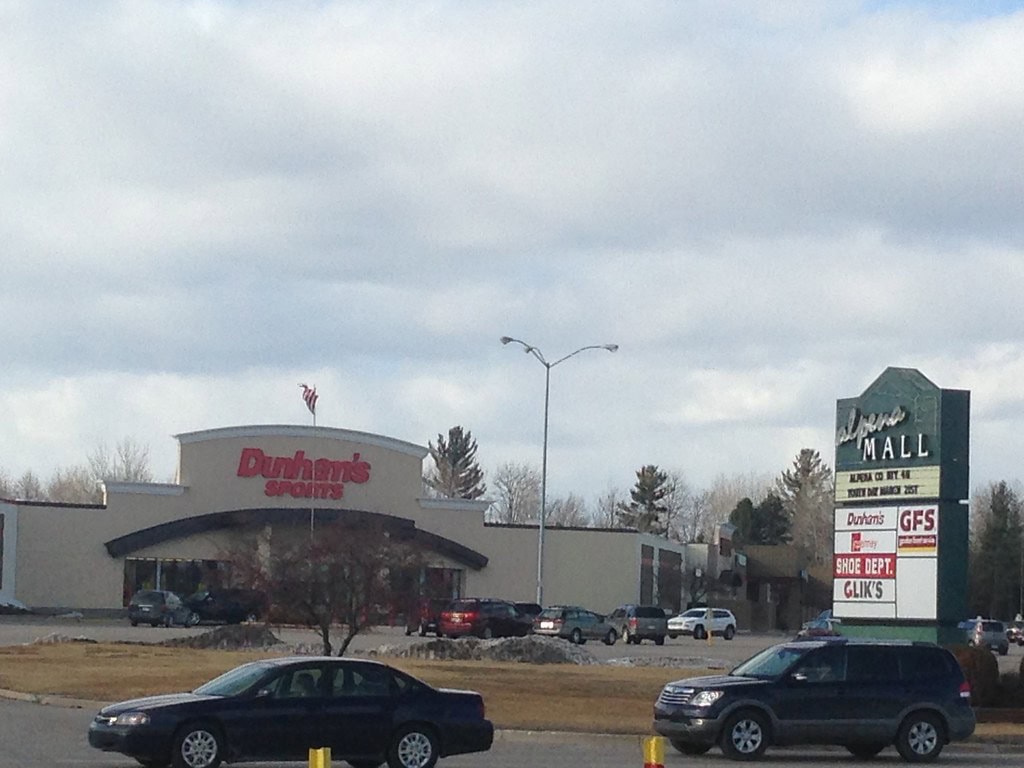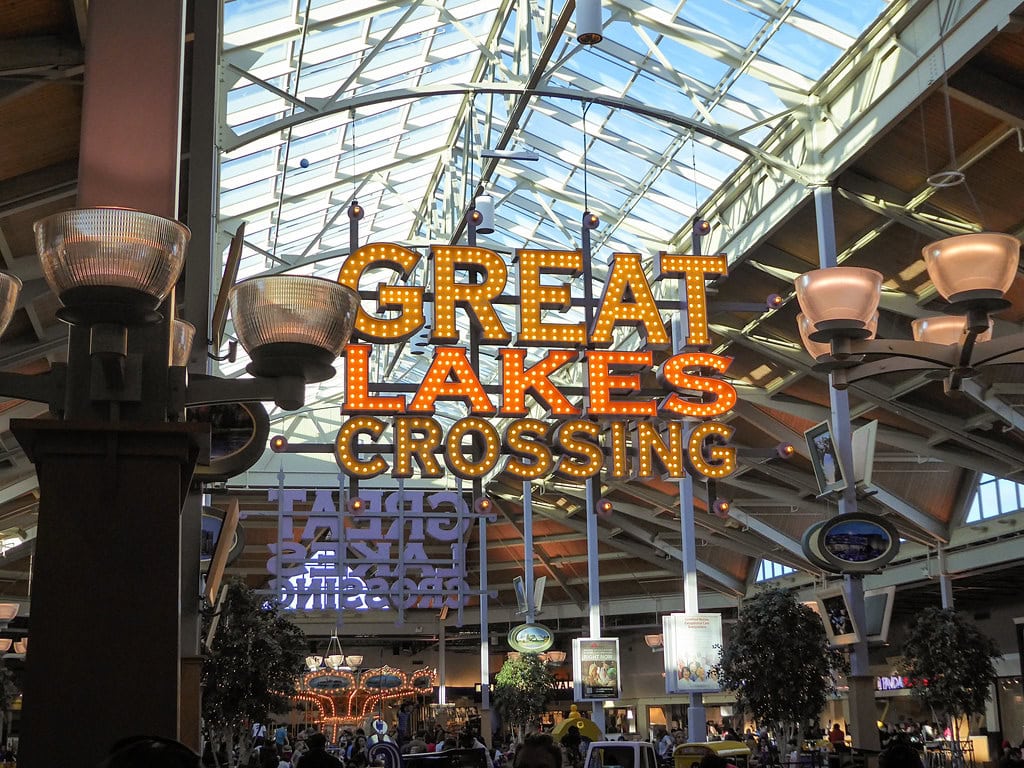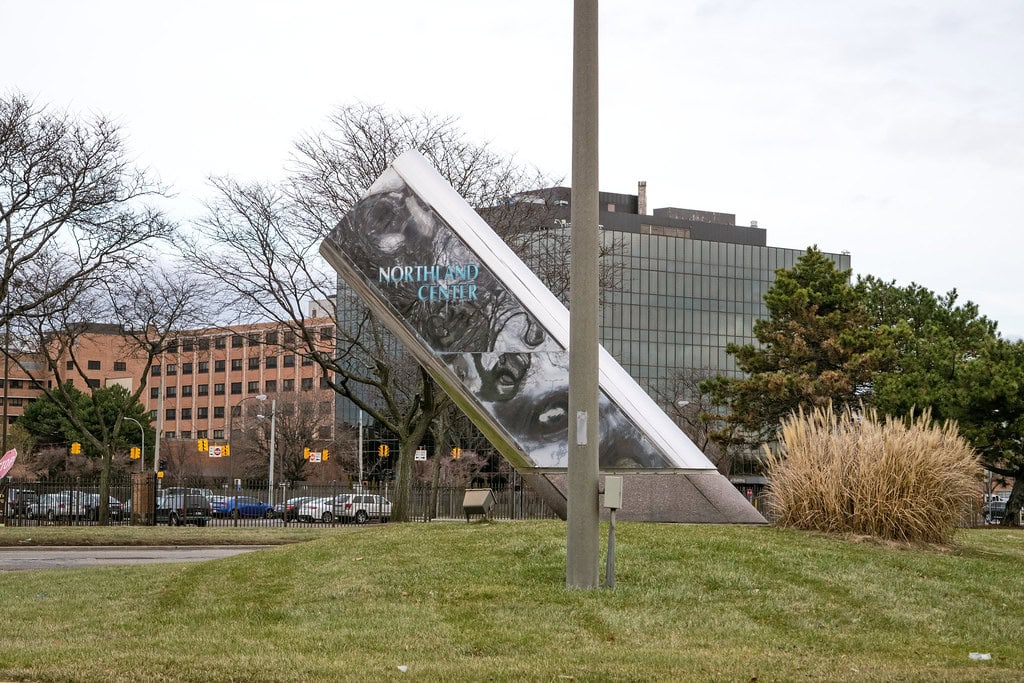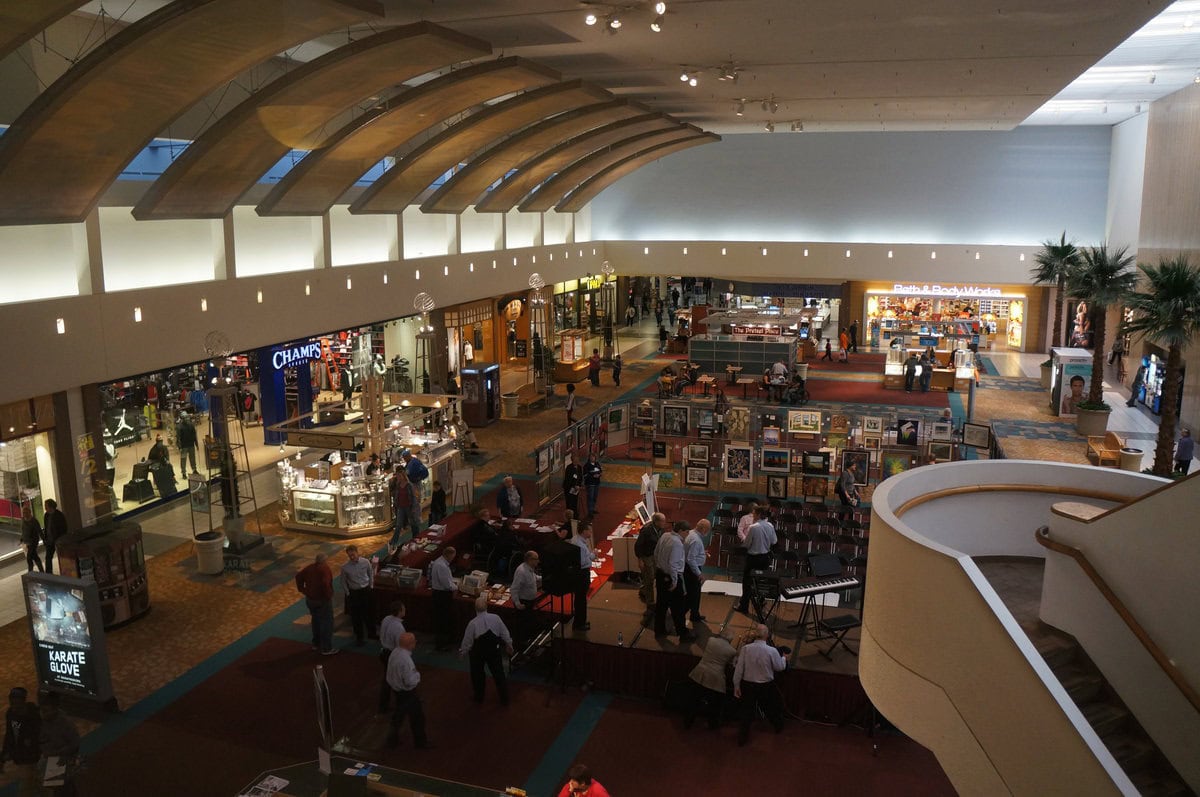A Quiet Mall with a Loud Memory
The tile floors once reflected afternoon light across glass storefronts that barely changed for decades.
You'd pass Hot Sam pretzels, the camel-colored bricks near Aladdin's Castle, maybe hear a tinny jingle from an arcade machine. It was never loud in there, just steady.
By fall 1975, Kinney Shoes had left downtown Bay City for this space. So had Wiechmann's, pulling shoppers from across the Thumb.
The ribbon-cutting came in November 1975, with Kmart already open and leases mostly signed. There was optimism in the layout alone.
For locals who browse the web today for things to do in Bay City, Michigan, that stretch of Center Road doesn't offer much.
But the name still lands: Hampton Towne Centre. What's left is quiet. But if you remember the way it opened, it wasn't always that way.
Leasing, Anchors, and Launch Strategy (1973-1975)
Plans for Hampton Square Mall were first announced in August 1973 by Ramco-Gershenson Properties Trust, a Michigan-based developer with a focus on enclosed retail sites.
The company planned a 300,000-square-foot shopping center for the southeast corner of Center and Pine Roads in Hampton Township.
Groundbreaking began that September, with Kmart confirmed early on as the first major tenant.
By January 1975, the list of expected retailers included Kinney Shoes and, by February, the Saginaw-based Wiechmann's department store.
Delays pushed the official opening until November of that year. The steel shipment lag during a labor strike had slowed things considerably.
Even so, only five store spaces were reportedly left unclaimed when the mall neared completion.
The opening date was set for November 12, 1975. Tenants like Aladdin's Castle, Camelot Music, and Hot Sam rounded out the offerings, giving the space a mix of local and national retail.
Wah Yee, an architect from Southfield, Michigan, had designed the structure. It opened with a ribbon-cutting and a crowd that filled the tiled corridor.
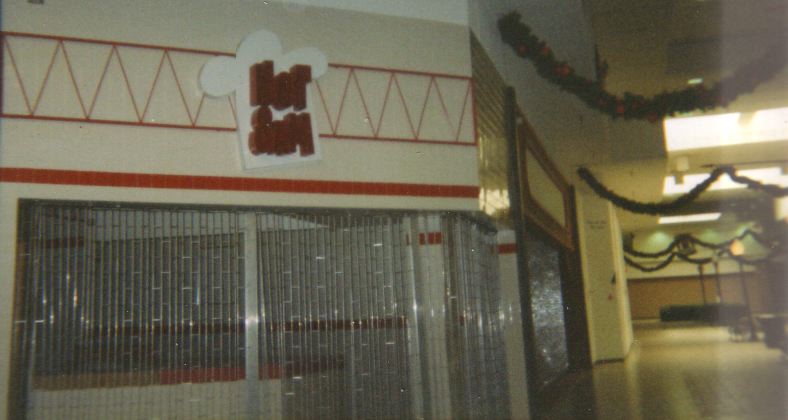
Buildouts, Lease Strategy, and Retail Expansion (1976-1990)
By July 1976, the leasing pace had surpassed early projections. Ramco-Gershenson reported the mall as 91 percent occupied, with new additions like Zales, B. Dalton Bookseller, and Hallmark pulling steady traffic.
A&P had committed by mid-1977 to replace its aging Essexville location with a newer, modernized supermarket on-site.
That expansion followed the mall's original blueprint for a third anchor and filled the space west of Wiechmann's.
The layout didn't freeze. In 1981, the mall bought out Gantos and a nearby vitamin shop to make room for Perry Drug.
Management cited internal market analysis: too many women's fashion stores, too few in health and beauty. That same year brought GNC, RadioShack, and Volume Shoes into the mix.
The physical reshuffling matched a retail pivot taking place across other midwestern malls.
Ownership shifted in 1984. Ramco-Gershenson transferred the property to CPR Hampton Associates, based in California, though they stayed on as managers.
Over the next two years, Bintz Sporting Goods and Winkelman's shut their doors. In 1986, the mall brought in a new manager from Universal Mall to handle day-to-day operations.
Among his first steps: new landscaping and local ad buys aimed at keeping the mall in rotation for holiday shopping runs.
Anchor Migration and Vacancy Pressures (1990-2002)
In January 1988, Ramco-Gershenson laid out plans for a new JCPenney wing.
The move would pull the long-standing downtown store out of Bay City and anchor a northern expansion of Hampton Towne Centre.
By July, the 32,000-square-foot lease was confirmed. MC Sports followed soon after, drawn by the same appeal: a newer mall with easier access to customers from the Thumb.
That growth spurt gave Hampton Towne Centre 350,000 square feet of leasable space by 1990. But cracks were showing.
Early 1991 brought three exits: MC Sports, KB Toys, and Carter's, one of the mall's original tenants. Then came the real shift. Bay City Mall opened just months later.
Zales and GNC left almost immediately for the new development. CPR Hampton Associates filed for Chapter 11 in November 1991, citing unpaid debts to Ramco-Gershenson and Consumers Energy.
The fallout stretched through the mid-90s. JCPenney relocated. Wiechmann's shuttered. What was left began to hollow. Kmart, still hanging on, kept the lights on through the end of the decade.
In 1994, a McDonald's opened inside the mall. It was a curious marker of a mall that was no longer growing but hadn't fully gone quiet either.
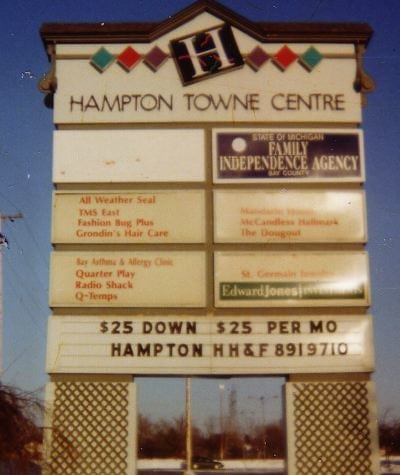
Tenant Losses and Final Retail Shutdown (2002-2010)
Kmart closed its doors at Hampton Towne Centre in 2002. It was the last major anchor, and its exit wasn't just another vacancy - it shifted the entire purpose of the building. The retail focus faded fast.
Most storefronts stayed dark. Mandarin House, a Chinese restaurant still operating inside the mall at the time, held out longer than most but became the exception, not the norm.
Leasing efforts pivoted. By the mid-2000s, only service-related tenants remained: a Michigan Department of Human Services office, a thrift shop called Cat's Meow, and the Bay-Arenac Intermediate School District.
Office space replaced food court tables. The tile echoed differently with so few footfalls.
On September 15, 2010, the mall shut down entirely as a commercial space. It didn't go out with boards on the doors or smashed windows.
Instead, it just emptied. Mandarin House relocated after the closure, leaving behind a space still technically open, but with no retailers left to draw a crowd.
Outside, the building kept its original profile. Inside, the layout stayed mostly intact. But what once held dozens of storefronts was now a long corridor with locked gates and hallway silence.
Ownership Transfer and Mixed-Use Speculation (2011-2017)
In August 2011, local businessman Art Dore purchased the mall. At the time of sale, only three tenants were still active: the Bay-Arenac Intermediate School District, the DHS office, and Cat's Meow thrift store.
Retail leasing wasn't part of the pitch. Dore announced he'd reopen the property as a mixed-use space, combining office suites and commercial storefronts, though the plan never took off in full.
The structure remained mostly unchanged through those years. No major renovations, no demolition. Just the occasional mention in local papers and a few hopeful updates.
By 2017, Dore introduced a financial incentive to attract business: free first-year rent for any new tenant willing to lease inside the property.
He framed it as a practical offer - a way to help local shops get started without the upfront cost.
But the free-rent deal didn't change much. No large retail clients signed on, and foot traffic didn't return. From the outside, the building looked the same as it had for years.
Do-All Material Assistance Center, The Cat's Meow, Bay-Arenac ISD - Living and Learning Center, Bay-Arenac Special Education, and the Department of Human Services stayed open, but the rest of the interior stayed empty.
Even the lights, when on, gave off more shadow than glow.
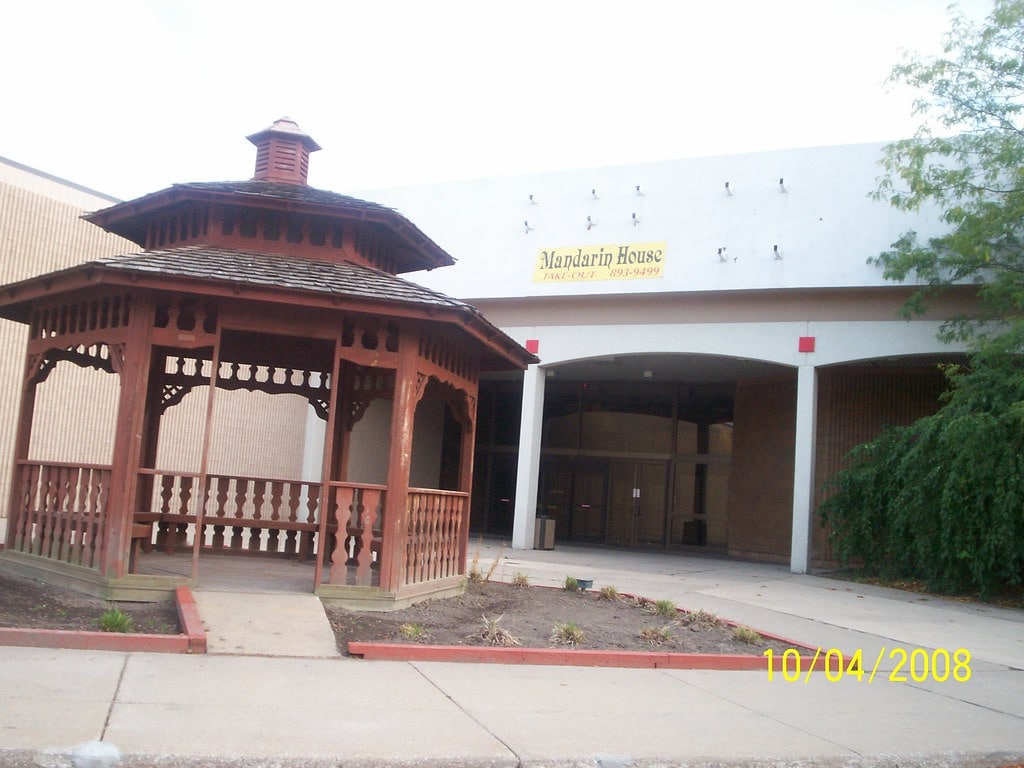
Post-2017 Leasing Stagnation and Ownership Transition (2017-2022)
Between 2017 and 2022, Hampton Towne Centre stayed largely frozen. The building stood, with the same walls, the same layout, and the same tenants.
Art Dore, the mall's final owner, died in November 2022. Local press noted the passing but made no mention of plans for the building.
With no stated succession and no public statements from partners or estate managers, the property's direction stalled again.
The structure remained intact, and the parking lot was still used by those few public-service tenants. From Center Road, nothing had changed. Inside, the echo off the tile stayed the same length and tone as it had five years earlier.
Municipal Planning, Zoning Activity, and the Present Day (2024-2025)
Bay City adopted its updated Master Plan on October 21, 2024. The document included new zoning language, development goals, and corridor overlays meant to support commercial reinvestment.
Although Hampton Towne Centre sat just outside city limits in Hampton Township, the city's revised growth boundaries placed renewed focus on surrounding corridors that once fed retail traffic directly to the mall's front entrance.
By mid-2025, the site remained unchanged. There were no press releases, no building permits filed. Local Facebook posts still mentioned the mall occasionally, usually in passing.
One early-2025 post imagined the building reimagined for teens or toddlers, but didn't come from anyone tied to ownership or local government.
The mall structure remained standing, vacant except for a few steady tenants, with no new activity showing up on Bay County's business filings.
🍀

